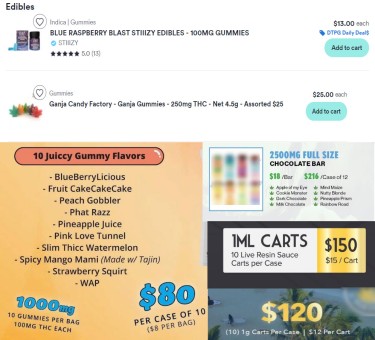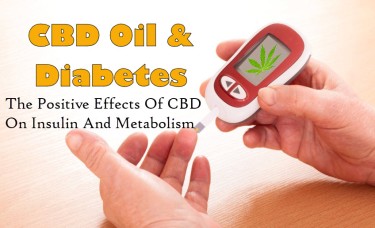Cannabis News
Society and Their Substances – What Do You Really Know About Drugs and the People Who Use Them?
Published
11 months agoon
By
admin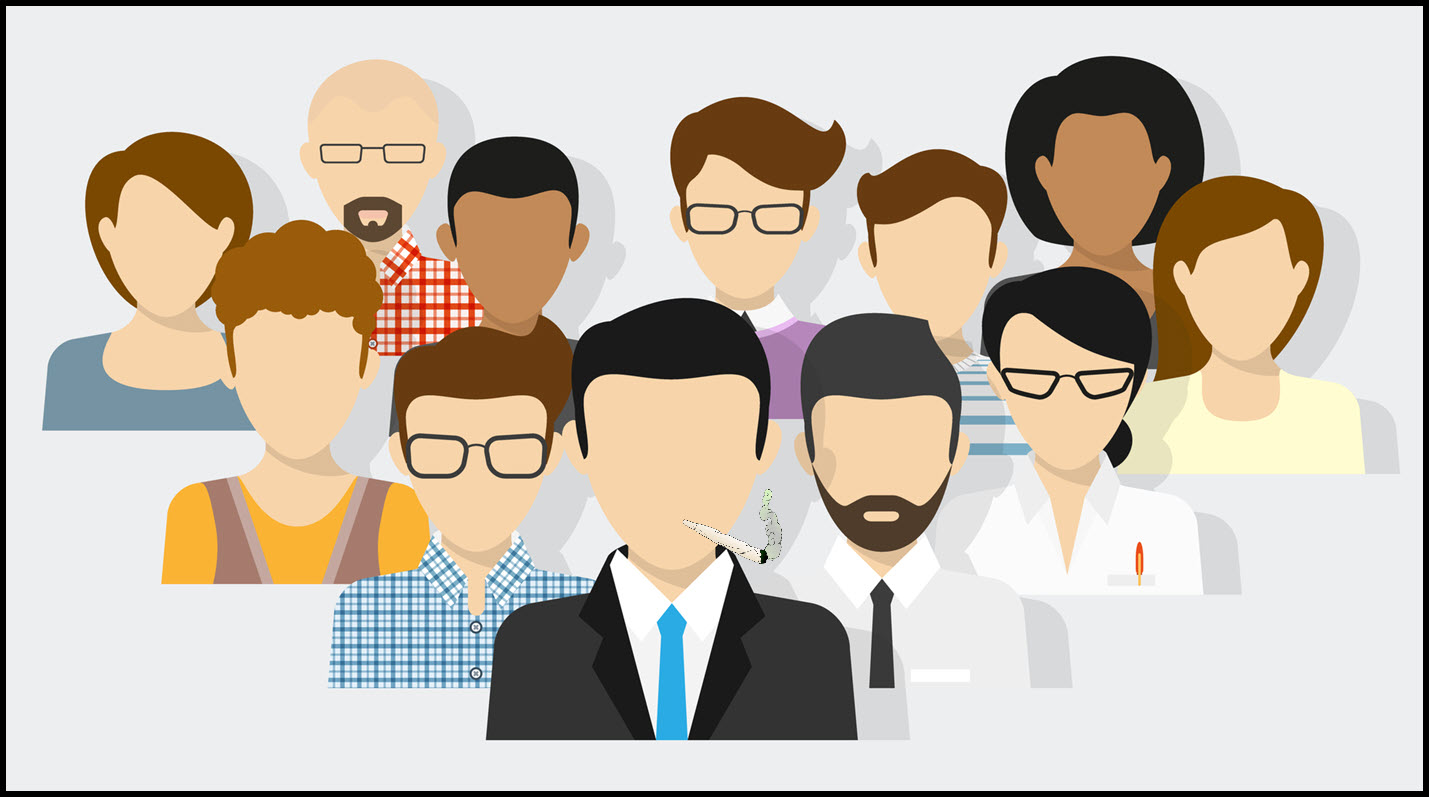

Society and their Substances: Dispelling the Common myths of Drugs and Drug Users
Have you ever wondered “why” are drugs illegal? Some might look to places like Portland Oregon and say, “Just look at Portland, junkies wandering the streets, doing heroin out in the open!” and they wouldn’t be wrong.
Portland decided to decriminalize all drugs, and made it no more criminal than a speeding ticket. But there was a catch, if the drug user wanted a medical health check, the $100 fine would be waved with the idea of getting the user in touch with medical professionals.
While humane, it’s obvious that these policies aren’t crafted by professional drug users. It’s often the case that “non-drug users” dictate the policies of “drug users” in the name of public health, yet have no understanding of the psychology of an addict.
Even the best addiction expert would never be able to understand the fundamentals of an addict’s mind until he or she becomes addicted to something. The logic, the reasoning, the internal dialogue all change to support the addiction, or to use it as a crutch to blame them for all their problems.
Yet, what news outlets like Fox ignore with the city of Portland is that there is a large homeless population. And when there is misery mixed with cheap and accessible drugs with little criminal penalties or education programs in place – you’ve got a cocktail for disaster.
Now, do we blame “drugs” for this…or is this a problem of the policies surrounding drugs?
Of course, one cannot discard that some drugs are just inherently more damaging to the human body and mind than others. For example, it’s not the same smoking a strong joint than it is injecting yourself with heroin. Therefore the word “drugs” cannot begin to fully encompass the whole problem with “drugs”.
It’s a blanket statement that ignores all the nuance of drugs, their users, and the interaction between substance and society.
Is there a way to fix Portland? Well, yes – but criminalizing drugs is not the way. In fact, criminalizing drugs is counter productive as it makes the environment surrounding drug use, sales, and distribution more lucrative and more dangerous. Other than, “drugs are done in the shadows”, there is no inherent benefit of drug prohibition.
I’ll get a bit into how one could possibly address this problem later on, however – to begin to understand the complexity of “Drugs”, let’s begin by addressing the myths.
Myth 1: There’s a clear definition for Drugs!
“He was doing the drugs!” a worried mom confesses to her neighbor while finishing her third glass of wine. Her nerves finally settled and the social lubricant unhinged her jaw so her soul could sing her anxieties to the world, unbothered by the consequences.
Not to get all Matt Walsh on you folk but… “What is a drug?”
The truth is a “drug” by definition is any substance that changes you physiologically and has an impact on your psychologically”.
Or if you want to get technical, the American Heritage dictionary defines drug as, “A chemical substance, such as a narcotic or hallucinogen, that affects the central nervous system, causing changes in behavior and often addiction.”
Here’s the thing…everything is a “chemical substance”. If you’re putting sugar in your coffee, you’re putting “chemical substances in other chemical substances”·
Secondly, it needs only to affect the central nervous system, causing changes in behavior and often addiction?
Well, under that classification sugar is one hell of a drug – and we give it to children!!!
WHY WON’T ANYONE EVER THINK ABOUT THOSE CHILDREN!!!
Karen 2:19, The Big Book of Karens
Yet when you say, “He did drugs” you’re not thinking about the guy who snarfed down 18 Twinkies. You’re thinking, “Portland Oregon” aren’t you?
Well, that’s because Uncle Sam’s mind control and propaganda machine did its job and installed a bias towards certain drugs. With the help of Pharma, they have been shaping the way we view the definition of drugs since the 1970s.
This is because in the 1971 Controlled Substance Act, Pharma was granted basically “ownership” of all drug development and research in the US, and basically a handful of government sanctioned companies would become our “pharma overlords”.
Along with the FDA [funded by them] and the DEA [Funded by you], Pharma could create the biggest, most insidious monopoly in the world – and then involved the Military Industrial Complex for fun.
[1970s] Pharma: “Hey man, so Colombia – they be making some mad cocaine and its undercutting our profits!”
DEA: Sure, we’ll go create violent altercations between local law enforcement and drug dealers and coerce the government to adopt our strict “anti-drug rhetoric” drafted up by the Prison Industrial Complex!”
Pharma: “Nixon would be proud!”
Yes, and while this might sound highly conspiratorial to some of you – it’s very well documented and all it takes it to walk down the history of drug prohibition to spot the shitfuckery a mile away!
The 1971 Controlled Substance Act gave power to Pharma, and Pharma used this opportunity to “re-educate the populace” by calling what they produce “medicine” and what anyone other than them produce “drugs”.
Yet often times, it’s the “medicine” that comes with 50-side effects including rectal bleeding – but smoking weed is as bad as heroin!
Oh yea, according to the hallowed document that ensured the government authority over your body, cannabis is classified as having “no medical value and a high potential for abuse”. Anyone who has taken any drugs would understand that this is absolute nonsense.
What’s more, tobacco nor alcohol is on the Controlled Substance Act – those drugs aren’t the same as the “other-other drugs” produced by those brown people in the hills laced with demon juice and murder!
The definition you subscribe to about drugs is sadly not yours – it’s a plant. And invasive parasite created by an entity that sees you as the “product”. You are the stock. That’s why you’re not allowed to consume certain “drugs” – it might make you think too much outside of the box.
Myth 2: People who use drugs are suffering from substance use disorder
Most people who use drugs are not particularly addicted. Well, perhaps as addicted as you are to coffee. It’s something that you depend on daily (in the case you’re a coffee drinker), however, it’s not the end of the world when you miss it a day or two.
You might have some low-key physical withdrawal…and in fact, detoxing from coffee is one hell of a detox! Don’t believe me? Go 90-days without coffee and see how addicted you truly are!
Yet some people even wear this addiction as a badge! “I’m totally addicted to java bro!” “Me too!”
There are some drugs that are socially accepted, and even “addictive behavior” is celebrated because the drug itself is seen as benign. People literally go binge drink to get “totally wasted” and laugh about it, even though more people die from alcohol poisoning each year than all of the psychedelic drugs combined.
Yet getting “smashed” is celebrated. “Hangover 1,2,3” is an homage to the whole “getting shitfaced” ideals of the American Badass.
But even then, the vast majority of people who drink alcohol do so in moderation – and this goes for virtually every other drug except maybe for meth, crack, and some lower quality substances. These tend to create devastating physiological responses to the substances, and hyper-addicts tend to kill themselves with it.
Nonetheless, for the vast majority of drugs…people take them responsibly. Just think about it, you do your taxes, you invest your money, you plan vacations, you’ve got a job with a lot of responsibility. If you ever decide to take a psychedelic – wouldn’t you apply the same level of care and attention to the experience?
Of course you would! You’d learn that you don’t need to take a lot of it, you’ll understand set and setting – take it, experience it…assess whether you need more or whether you’re finished…and go about your way.
This is virtually the experience of the common drug user. I for example, am a psychonaut and have been practicing for 20-years. The last time I took a psychedelic was 2 years ago and haven’t had the opportunity nor the “calling” to dive back into a deep weekend of psychedelia.
Typically, however, I use psychedelics once or twice a year. I might microdose for periods of creation and project management, but beyond this – I keep my use of psychedelics in check and for specific purposes.
With proper education, most people would learn the ins and outs of certain drugs, how they behave, what frequency they can use them safely, etc.
The DSM-V, the diagnostic tool [created by pharma], has a particular definition of what it means to have Substance Use Disorder, and they have definitions based on different drugs. However, their classifications are done purely from a pharmacological perspective with no understanding of psychological interplay between a particular person and a substance.
Why is it that the homeless in Portland are doing hard drugs constantly, but Dr. Keven Hart understands how to use heroin for recreational purposes?
Personally, I’m not all that interested in heroin, but if a person can take it responsibly in their own home – then they should be able to do it. And under the DSM-V any kind of heroin use would be considered “substance abuse disorder”.
And this goes back to the classification of “drugs” we covered earlier. The “bad drugs” vs the “good drugs” get different treatment and tolerance thresholds. They decide when you’re addicted, and being addicted is bad – except if it’s tobacco, sugar, alcohol, fast foods, etc.
Myth 3: Drug Users are dirty, immoral, and dangerous losers…
A heroin user, coke user, and a cannabis user walked into a bar – and nobody could judge which one used which….and probably, some of them had high paying jobs…
To think “drug users” are dirty is to think “soda drinkers are fat” or “fast food eaters” are poor. Who is a fast food eater? What does a “soda drinker” look like?
You can’t define them because “everyone” uses it as “everyone” uses drugs. If we’re talking about the “naughty drug list” – the principle remains consistent. If you see me in real life, you would have no idea that I have huddled on the edge of cosmic portals, deeply entrenched in a hallucination after consuming LSD.
You’d say, “look at that responsible, and respectable tax payer!” Because, I have long learned to shift my external appearance to become invisible to the police. The youth dress provocatively, the wise dress practically.
Furthermore, if substance use had anything to do with “morality” or “hygiene”, then I wonder what moral outcome eating hot dogs produce? If you consume a lettuce, do you become a morally ‘better’ person?
After all, if drug use can dictate morals, then food must also play a role. If you drink a beer, do you become “neutral?”
Who dictates the morality scale in correlation to the substance used?
As you can see my friends, when you begin to poke at these myths – they begin to come apart. This is because this particular myth comes from early prohibition – Reefer Madness! Even though reefer madness wasn’t the first mechanism of stereotyping a group of people, it is the most known.
Drug prohibition has long utilized this tactic of “demoralization of a group” in order to justify their atrocities. It’s a more subtle Hitlarian “blame the Jews” tactic of creating a public boogie-man that allows people to pass laws they would commonly not pass.
For example, with the Chinese immigrants who used opium, they were demonized as a group when settler sons and husbands were caught get high and dirty with their Asian brethren.
Then laws were drafted up based on early Christian morality – which was based in puritanism for the most part – which is basically to deny yourself of all pleasures for the sake of getting a mansion in heaven or something of the sort.
The point is, morality is a subjective slippery slope. In the 1960s, any church endorsing gay marriage would have been excommunicated by their peers – now they are opening their doors all over the place.
Morals shift, and the argument that “all drug users are dirty and immoral” is a weak one that could easily be flipped on virtually every substance – simply because morals are fluid.
Myth 4: People take drugs because they have problems
While some people do take drugs to mask their problems, the vast majority take drugs for its effects. When I’m eating a psychedelic mushroom out in the wilderness, I’m not thinking, “If I take this, all my troubles will melt away!”
Rather I say, “Oh shit…relax, and let go…what comes up will come down…” and then I relax, breathe, spark up a joint and ride the magick into the cosmos.
Why do I do this?
Well, for starters, when you enter into a state of psychedelia – your brain begins to connect in ways it commonly does not. It enters into a state of “hyper-plasticity” meaning that you become less “rigid” in your thinking.
You can then, in this state, confront situations in your life from a completely new perspective. At times, it makes you realize that the way you have been looking at an idea or concept or challenge in your life, can be resolved by simply shifting your behavior or the way you feel about it.
Sometimes you can accept the loss of a loved one, or figure out a way to deal with that constant anxiety you’ve been feeling, peaking into the darkness and allowing the unconscious to manifest.
This is how I use psychedelics. Other people use it in different ways. But for no way am I using it to “get rid of my problems” or to “escape them”.
The heroin junkies in Portland aren’t escaping their problems – they are numbing their pain. They are abandoned, they live on the streets, they have no one that loves them, they are alone.
Why the hell wouldn’t you want to just numb yourself for as long as you can if you can see no escape from the hell you are living?
However, for the rest of us who take drugs responsibly – no one is trying to mask their problems with drugs. I smoke weed because I like to get high, I like how it interplays with my creative process and counterbalance it with caffeine.
Myth 5: Regular Drug use leads to addiction
Well, I’ve been smoking cannabis for about twenty years and if there’s anyone who should be addicted to it by now, it should be me.
Except, I frequently take breaks for months at a time and utilize different states of mind to achieve certain tasks. There are moments when absolute sobriety helps me, and then there’s moments when I smoke weed at the end of the day. There are days I smoke in the morning.
However, to claim I’m addicted to weed would be wrong, even though according to the DSM-V I’d probably be classified as such.
Once again, addiction isn’t necessarily bad. We all have our little addictions, yet we’re socially functional. We’re available to our children, we do our work, we don’t slack.
Why is it okay to play video games for 4 hours after work every day, yet you can’t smoke a bong rip? Why is one “relaxing” and the other one “addiction”.
Bias – that’s why!
Myth 6: Taking Drugs Damages People
The number one killer in the United States is heart disease. The #1 cause for heart disease is poor diet.
Considering that people eat so much fast food in the US – shouldn’t the fact that they are damaging themselves be reason enough to ban fast food? Perhaps not ban fast food, perhaps – we could weigh people at the front door which would give them a suitable menu based on their likeliness of developing a chronic disease.
I know some people may scoff at this idea, but it’s essentially what we’re doing with all drugs. We’re saying, “because this substance may cause physical harm…it should be illegal!” yet we don’t hold the same standards to other drugs or foods in society.
Why is it conveniently untaxable, non-pharma drugs that “damages people”, and should be illegal – but legal drugs produced by pharma has a threshold on deaths before it gets recalled?
If harm is the metric for illegality, then we should begin to restrict people’s diets because it is costing the taxpayer billions, people are taking up hospital beds that could be for healthy people that don’t eat themselves into heart disease….
Ya, sounds a bit “Nazi?” That’s because it is!
And the justification of keeping drugs illegal because of possible harm then should be applied to all substances, otherwise it undermines the very justification for keeping it illegal.
The Sticky Bottom Line
You’re not going to save the Portland problem by criminalizing drugs. You can do it by
-
Addressing the homeless problem
-
Creating Drug Centers, where they get free drugs like in Switzerland. There is no need to get into rehab, although it’s available. You can have as much drugs as long as it’s not a lethal dose.
-
Educate people – we don’t need to teach people which drugs are bad…we need to teach them how to use drugs if they choose.
You can have amazing results from certain drugs. Modern research is showing us that psychedelics has the ability to do what common psychiatric medicine is failing. It can help us dissolve PTSD, make people break addiction in a single session, and completely transform their lives.
But if we keep on playing the prohibition game – we’re only going to continue to keep the solutions in the dark, under the thumb of Pharma – who certainly won’t ever put profits over people.
SOCIETY AND LEGALIZATION, READ ON…
You may like
-


Cannabis Rescheduling Takes The Next Steps
-


BREAKING NEWS: DEA Issues Notice of Proposed Rulemaking to Move Marijuana to Schedule III
-


Slovakia And Cannabis
-
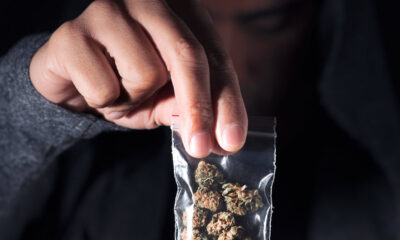

The Illegal Cannabis Market in America is Still 3x Bigger Than the Legal Marijuana Market
-


Can Taking CBD While Pregnant Cause Glucose Intolerance in Male Offspring But Not Female Children?
-


AI is making cannabis cultivation smarter
Cannabis News
BREAKING NEWS: DEA Issues Notice of Proposed Rulemaking to Move Marijuana to Schedule III
Published
8 hours agoon
May 16, 2024By
admin
Today is another historic day in the history of cannabis control and regulation. In a much anticipated announcement, the Drug Enforcement Administration (DEA) issued a notice of proposed rulemaking to reschedule marijuana, from Controlled Substances Act (CSA) schedule I to schedule III (the “Proposed Rule”).
We have covered the implications of a Schedule III placement in various posts on this blog, beginning with the Health and Human Services (HHS) recommendation that DEA undertake this rescheduling last August. See:
For now, here are a couple of high-level observations on today’s Proposed Rule.
First, DEA is not proposing an interim final rule. We expected as much, but it would have been nice! Under an interim final rule, an agency finds that it has good cause to issue a final rule without first publishing a proposed rule (as DEA did here). An interim final rule would have gone effect immediately upon publication, and marijuana would have been moved to schedule III today. Instead we’ll have to wait.
Second, the Proposed Rule gives a standard 60-day comment period, from the date the Proposed Rule is published in the Federal Register. That’s a pretty standard window; although, as I’ve explained before, this can always be extended.
Third, the Proposed Rule is clear that “any drugs containing a substance within the CSA’s definition of ‘marijuana’ would also remain subject to the applicable prohibitions in the Federal Food, Drug, and Cosmetic Act (“FDCA”).” No, this does not mean FDA enforcement is going to begin; and no, this does not mean Big Pharma is coming to squash state licensed operators. Stop saying that.
Fourth, the Proposed Rule gives very specific protocols for submitting electronic and other types of comments. These protocols are not hard to follow! But if you fail to do so, your comment will not make it into the record, and it will not be considered by DEA.
Fifth, I really like this paragraph:
HHS recommended in August 2023 that marijuana be rescheduled to schedule III. See Letter for Anne Milgram, Administrator, DEA, from Rachel L. Levine, M.D., Assistant Secretary for Health, HHS (Aug. 29, 2023) (“August 2023 Letter”). The Attorney General then sought the legal advice of the Office of Legal Counsel (“OLC”) at DOJ on questions relevant to this rulemaking proceeding. Among other conclusions, OLC concluded that “HHS’s scientific and medical determinations must be binding until issuance of a notice of proposed rulemaking [(‘NPRM’)].” Questions Related to the Potential Rescheduling of Marijuana, 45 Op. O.L.C. __, at *25 (Apr. 11, 2024) (“OLC Op.”).1 After the issuance of a notice of rulemaking proceedings, HHS’s scientific and medical determinations are accorded “significant deference” through the rest of the rulemaking process.2 OLC Op. at *26.
I’ve always argued that HHS’s scientific and medical determinations are binding under the plain language of the CSA itself. But it’s awfully nice to hear confirmation that OLC agreed– especially because there was some consternation among the cognoscenti about what OLC was doing here. It seems that OLC has essentially confirmed to DEA: “you are stuck with Schedule III.”
Sixth, it’s interesting to see the Proposed Rule delve into problematic international law constraints. The Proposed Rule gives a rather cursory analysis here, but OLC seems to have justified marijuana’s placement on Schedule III in the context of public international law obligations, including the 1961 U.N. Singled Convention on Narcotic Drugs (to which the United States is a party). DEA states, however, at Proposed Rule page 86 that:
“[c]oncurrent with this rulemaking, DEA will consider the marijuana-specific controls that would be necessary to meet U.S. obligations under the Single Convention and the Convention on Psychotropic Substances in the event that marijuana is rescheduled to schedule III, and, to the extent they are needed if marijuana is rescheduled, will seek to finalize any such regulations as soon as possible.”
This could get pretty interesting! Expect a lot of fretting here by industry and the general public.
Seventh, it was also interesting to see DEA and HHS justify why it arrived at a Schedule III conclusion, after concluding in 2016 that marijuana should stay in schedule I. I have wondered aloud about the intellectual gymnastics that might be required for this. Take a read at the rationale on the Proposed Rule at pages 11 – 13 and see if you’re convinced.
_____
OK, that’s it for now. The Proposed Rule is 92 pages and I had less than 30 minutes to read it and write this today. We will follow up as soon as next week with further thoughts on this very significant development.
Cannabis News
The Illegal Cannabis Market in America is Still 3x Bigger Than the Legal Marijuana Market
Published
14 hours agoon
May 16, 2024By
admin

In 2022, illicit cannabis sales soared to over $74 billion, surpassing the legal market’s $28 billion by a remarkable 164%, according to the latest report from New Frontier Data on American cannabis consumers. This significant disparity highlights potential opportunities for legal businesses to attract frequent users who currently depend on unregulated sources, as well as the millions of adults interested in cannabis but hesitant to try it.
Canada has a similar problem, as only 20% of the legally grown cannabis get sold to customers on the legal market.
To delve into the issues contributing to the industry’s multi-billion-dollar challenge, New Frontier Data surveyed over 5,500 U.S. adults from various market segments. Conducted in the first quarter of 2023, this demographically representative survey includes consumers who obtain cannabis through a wide range of sources.
Snapshot of U.S. Cannabis Consumers
-
42% of U.S. consumers obtain cannabis from state-regulated markets.
-
34% live in adult-use markets.
-
8% are registered patients in medical-only markets.
-
24% have access to state-legal cannabis but do not primarily use licensed retailers.
-
17% live in adult-use markets but obtain cannabis from friends, family, or illicit dealers.
-
7% live in medical-only markets but do not participate in their state’s medical program.
-
34% do not have adequate access to legal cannabis in their state and would require policy reform to use licensed markets.
-
23% live in states where cannabis is illegal.
-
11% are non-medical consumers in medical-only states.
Converting Illicit Consumers to Retail Customers
While most dispensaries compete with each other to serve the same group of committed legal market customers, significant opportunities exist outside this current customer pool. New Frontier Data’s research identifies four key barriers that must be overcome to attract frequent gray-market consumers into licensed dispensary shoppers.
Accessibility
Accessibility is a major barrier for frequent gray-market consumers, who disproportionately live in urban areas and may lack convenient transportation to licensed dispensaries. Similarly, those sourcing from friends and family often do not live near a dispensary. Overcoming this barrier requires businesses to work with local regulators to change zoning ordinances and expand delivery coverage areas. For example, in locations with a high population of senior citizens, like Leisure World in Seal Beach, California, local dispensaries offer shuttle services to bring customers to the store, addressing transportation challenges and fostering loyalty.
By addressing these barriers—price, product variety, product quality, and accessibility—licensed retailers can effectively convert gray-market consumers into loyal customers, expanding their reach beyond the current legal market clientele.
Product Quality
Quality is another crucial factor. Much of the illicit cannabis sold in the U.S. is high-quality flower grown in California. To compete with the gray market, retailers in every legal market must offer in-demand strains with quality that meets or exceeds what is available from California farms. This is especially important for consumers with higher tolerances and experienced palates. Ensuring quality and freshness can help attract frequent users who often source from friends and family.
Product Variety
A key differentiator for legal dispensaries is their range of manufactured, non-flower products. Even in adult-use states, fewer than half of surveyed consumers reported access to anything beyond flower, pre-rolls, and edibles. Notably, 25% of frequent consumers in adult-use markets who primarily buy from friends, family, or dealers occasionally visit dispensaries for non-flower products like vape cartridges, concentrates, and topicals. Licensed retailers can better retain these customers by offering promotions that bundle affordable flower with non-flower products.
Price
Price is a significant factor for gray-market consumers, who tend to consume the most cannabis. According to the data, 56% of these consumers use cannabis multiple times per day, with about 32% consuming more than an ounce per month. These frequent consumers often have lower household incomes than those sourcing from friends and family, who in turn have lower incomes than licensed dispensary shoppers. High inflation disproportionately affects low-income households, making affordability crucial. To appeal to this segment in 2024, retailers should offer a variety of products at different price points, with attractive promotions like bulk discounts and one-gram deals. However, heavy taxation in many markets can make price competition challenging.
Capturing the Canna-Curious Market
While current gray-market customers may be entrenched in their habits or face difficult-to-overcome barriers, there are millions of potential new adult customers open to trying cannabis for the first time, or the first time in decades.
According to the report, “Roughly two in five (39 percent) potential consumers in adult-use states described themselves as likely to try cannabis in the next six months. The good news is that for any of these potential consumers who choose to begin consuming cannabis, retail is a likely and attractive source of cannabis relative to the illicit market.”
New Frontier Data’s insights into product preferences are crucial for attracting these new customers. A significant 76% of potential customers expressed interest in edibles, 50% are interested in topicals, 42% in beverages, and 28% in tinctures. Only 18% showed interest in smoking flower. Although flower remains a dominant product in retail sales nationwide, dispensaries that effectively market non-flower products have the best chance of attracting a new wave of older, suburban, canna-curious individuals with disposable income.
By focusing on the preferences and interests of these potential new consumers, dispensaries can expand their customer base and tap into a growing market of curious holdouts eager to explore legal cannabis options.
Bottom Line
The dominance of illicit cannabis sales over the legal market in the U.S. underscores significant challenges for the cannabis industry but also presents opportunities. To convert gray-market consumers to legal dispensary shoppers, businesses must address barriers such as accessibility, product quality, variety, and price. Enhancing transportation options to dispensaries, ensuring high-quality products that rival those from California, expanding non-flower product offerings, and creating competitive pricing strategies are essential. Additionally, there is a substantial untapped market among canna-curious adults who are open to trying cannabis legally. Legal retailers can attract these potential customers by focusing on their preferences for edibles, topicals, and other non-smoking products. By implementing these strategies, the legal cannabis market can expand its customer base, convert illicit users, and strengthen the industry’s overall growth and sustainability.
HOW MUCH CHEAPER IS WEED ON THE ILLICIT MARKET, READ ON…
Cannabis News
Can Taking CBD While Pregnant Cause Glucose Intolerance in Male Offspring But Not Female Children?
Published
15 hours agoon
May 16, 2024By
admin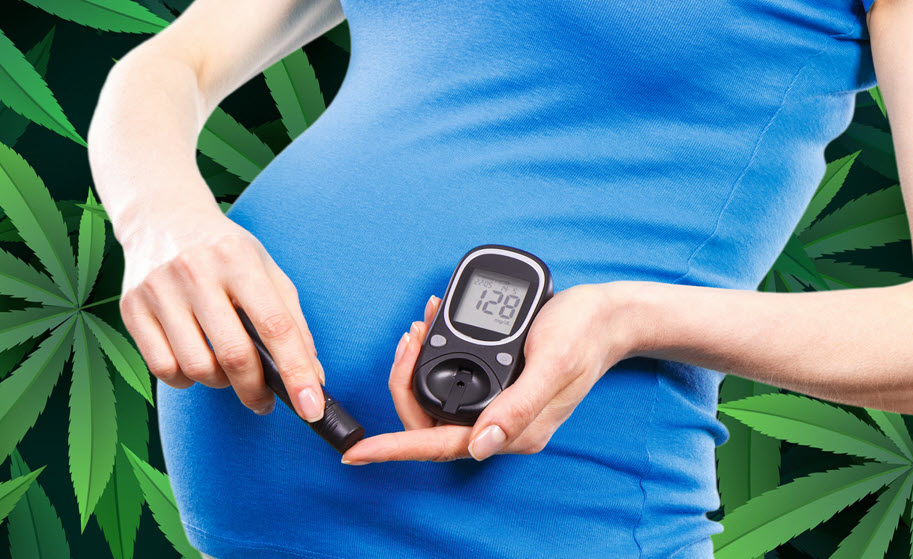
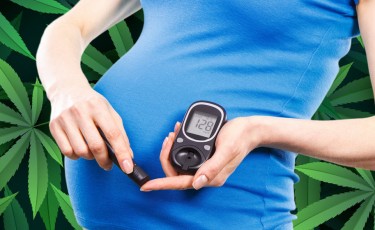
A recent preclinical investigation reported in the Journal of Endocrinology has unveiled that prenatal exposure to cannabidiol (CBD) induces glucose intolerance in 3-month-old Wistar rats. Additionally, a Canadian research group observed changes in hepatic development and metabolic processes.
The authors stated, “CBD can traverse the placenta and enter fetal circulation, potentially affecting the development of crucial metabolic organs.” They hypothesized that maternal exposure to CBD during rat pregnancy would result in deficiencies in both pancreatic β-cell mass and glucose regulation in the offspring.
The pregnant Wistar rats were given intraperitoneal injections of 3 mg/kg CBD or a vehicle by the research team during the trial, which lasted from gestational day 6 until delivery. Male offspring exposed to CBD showed glucose intolerance but maintained normal pancreatic β/α-cell mass; nevertheless, there were no significant changes in maternal food consumption, weight gain, or neonatal outcomes.
A transcriptomic analysis was conducted on the livers of male rats exposed to CBD, revealing altered gene expression related to circadian clock machinery. Additionally, reductions in the expression of genes involved in hepatic development and metabolic processes were observed.
Remarkably, at three months of age, only male offspring exposed to CBD showed signs of glucose intolerance. The authors speculate that estrogen-mediated mechanisms may have prevented female rats from acquiring glucose intolerance, given estrogen’s established protective effect against metabolic dysfunction. To validate this theory, more research is necessary.
Previous research has linked alterations in the liver’s circadian rhythm to glucose intolerance. As a result, the scientists speculate that exposure to CBD during pregnancy and the resulting alterations in circadian gene expression may be connected to the abnormalities in glucose intolerance seen in male rats.
Although CBD has become more and more popular, especially in the last few years, the authors advise pregnant women to take it with caution since it may have negative consequences on the offspring’s metabolic health.
Gender-Specific Effects of Prenatal CBD Exposure
Intriguingly, the study’s findings underscore a notable discrepancy in the metabolic responses between male and female offspring following prenatal CBD exposure. While male rats exhibited glucose intolerance, their female counterparts appeared unaffected. This gender-specific variation prompts a deeper exploration into the underlying mechanisms driving such disparities.
Recent research suggests that estrogen, a hormone predominant in female physiology, may play a pivotal role in buffering against metabolic dysfunction. The authors speculate that estrogen-mediated processes might confer protection against glucose intolerance in female rats exposed to CBD during gestation. However, elucidating the precise molecular pathways involved warrants further investigation.
Understanding the differential susceptibility to CBD-induced metabolic alterations based on gender holds significant implications for both research and clinical practice. Unraveling the interplay between CBD exposure, hormonal dynamics, and metabolic outcomes could pave the way for tailored therapeutic strategies and inform guidelines regarding cannabinoid use during pregnancy.
Altered Gene Expression and Circadian Rhythm Disruption
The transcriptome investigation of liver tissue from male rats exposed to prenatal CBD reveals fascinating changes in gene expression patterns, notably those related to circadian clock mechanisms and hepatic development. These molecular alterations shed light on the mechanisms behind CBD-induced metabolic abnormalities.
Circadian rhythms serve an important part in the body’s metabolic activities, including glucose homeostasis. The observed disruption in circadian gene expression reveals a possible mechanism connecting prenatal CBD exposure to glucose intolerance. Disruptions in the liver’s circadian rhythm have already been linked to metabolic diseases, emphasizing the importance of these results.
Furthermore, worries regarding the long-term effects of prenatal CBD exposure on liver function and metabolic health are raised by the decreases in gene expression linked to hepatic development. Gaining knowledge of how CBD disrupts the molecular processes that control hepatic growth may help to lessen its negative effects.
This study discovers potential therapeutic targets for intervention in addition to clarifying the intricate molecular processes behind CBD’s impacts on metabolic health. It will be necessary to develop targeted therapeutics in the future that elucidate the causal relationships between altered gene expression, circadian rhythm disruption, and metabolic dysfunction to lessen the adverse effects of prenatal CBD exposure.
Implications for Maternal Health and Public Policy
The increasing evidence of the negative consequences of prenatal CBD exposure on metabolic health in children has important implications for maternal well-being and public policy addressing marijuana usage while pregnant.
Given the growing popularity of CBD products and their perceived advantages, particularly in the treatment of various health concerns such as anxiety and pain, pregnant women may be more likely to use them. However, the outcomes of this study highlight the significance of exercising caution and making educated decisions about CBD usage while pregnant.
In light of the observed gender-specific effects and potential long-term consequences on metabolic health, there is a pressing need for comprehensive public health policies addressing the use of cannabinoids, including CBD, by pregnant individuals. These policies should aim to educate healthcare providers and expectant mothers about the potential risks associated with prenatal CBD exposure and emphasize the importance of seeking professional medical advice before using such products during pregnancy.
This study also emphasizes the necessity for future research to fully evaluate the safety of cannabis usage during pregnancy and to clarify the mechanisms underlying CBD’s impacts on metabolic health. These kinds of research are going to be crucial in helping to shape evidence-based policies and guidelines that protect the health of expectant mothers and fetuses.
Ultimately, we can better protect the health of expectant mothers and their children while ensuring that access to potentially helpful therapies remains balanced with the need to mitigate potential risks by incorporating the results of preclinical research into public health initiatives and policy development.
Bottom Line
The preclinical research highlights the possible negative consequences of cannabidiol (CBD) exposure during pregnancy on the metabolic well-being of male progeny, including glucose intolerance, disturbances in hepatic development, and irregularities in circadian gene expression. The results of the study not only warn against the use of CBD during pregnancy but also emphasize the necessity of comprehensive public health policies that inform medical professionals and pregnant women about the dangers of cannabis exposure. To protect the health of mothers and fetuses, further study is necessary to understand gender-specific reactions, investigate hormonal dynamics, and develop evidence-based recommendations. Incorporating these discoveries into public health campaigns and policy formulation will facilitate well-informed decision-making, minimize possible hazards, and guarantee the availability of advantageous treatments.
CBD AND DIABETES, READ ON…

Cannabis Rescheduling Takes The Next Steps

BREAKING NEWS: DEA Issues Notice of Proposed Rulemaking to Move Marijuana to Schedule III

Slovakia And Cannabis

The Illegal Cannabis Market in America is Still 3x Bigger Than the Legal Marijuana Market

Can Taking CBD While Pregnant Cause Glucose Intolerance in Male Offspring But Not Female Children?

AI is making cannabis cultivation smarter

New York Stooges – New York’s Cannabis Industry is Such a ClusterFudge, Gov. Hochul is Blaming Google and Yelp

Irrational Fear of High THC Cannabis Dispelled by New German Medical Study

Does Francis Ford Coppola Consume Weed

Can lemon-smelling weed cause less anxiety than others?

Distressed Cannabis Business Takeaways – Canna Law Blog™

United States: Alex Malyshev And Melinda Fellner Discuss The Intersection Of Tax And Cannabis In New Video Series – Part VI: Licensing (Video)

Drug Testing for Marijuana – The Joint Blog

What you Need to Know

Cannabis, alcohol firm SNDL loses CA$372.4 million in 2022

NCIA Write About Their Equity Scholarship Program

City Of Oakland Issues RFP For Employee Training Programs

It has been a wild news week – here’s how CBD and weed can help you relax

A new April 20 cannabis contest includes a $40,000 purse

UArizona launches online cannabis compliance online course
Trending
-

 Cannabis News1 year ago
Cannabis News1 year agoDistressed Cannabis Business Takeaways – Canna Law Blog™
-

 One-Hit Wonders1 year ago
One-Hit Wonders1 year agoUnited States: Alex Malyshev And Melinda Fellner Discuss The Intersection Of Tax And Cannabis In New Video Series – Part VI: Licensing (Video)
-

 drug testing5 months ago
drug testing5 months agoDrug Testing for Marijuana – The Joint Blog
-

 Cannabis 1011 year ago
Cannabis 1011 year agoWhat you Need to Know
-

 Marijuana Business Daily1 year ago
Marijuana Business Daily1 year agoCannabis, alcohol firm SNDL loses CA$372.4 million in 2022
-

 Education1 year ago
Education1 year agoNCIA Write About Their Equity Scholarship Program
-

 Education1 year ago
Education1 year agoCity Of Oakland Issues RFP For Employee Training Programs
-

 Cannabis1 year ago
Cannabis1 year agoIt has been a wild news week – here’s how CBD and weed can help you relax





